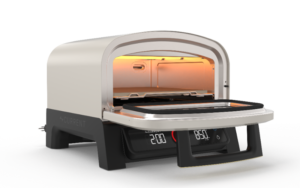In 2015—the most recent year for which data is available— the total amount spent on healthcare in the United States was $3.2 trillion, which represents 17.8% of gross domestic product (GDP). This amount far exceeds that of other industrialized countries, most of which have publicly-funded universal health systems. While the federal government accounts for the largest share of health care spending at 29%, consumers are not far behind, at 28%. And while there are numerous factors driving the comparatively higher cost of U.S. healthcare, the elephant in the room is that the majority of costs—86%, according to the Centers for Disease Control (CDC)—are due to chronic, mostly preventable diseases.
Surprisingly, by simply changing our behavior, we have the ability to dramatically reduce overall costs in the healthcare system. The CDC points out that four health risk behaviors—lack of exercise or physical activity, poor nutrition, tobacco use, and drinking too much alcohol—cause much of the illness, suffering, and early death related to chronic diseases and conditions. Focusing on physical activity is one of the easiest changes to make in our lives. And this doesn’t mean becoming a workout warrior, either. In fact, something as simple as just standing up periodically throughout the day can have provide a major health benefits. Studies show that prolonged sitting increases the risk of developing type 2 diabetes, heart disease, certain types of cancer, obesity, and even disability. Sitting too much can also accelerate the aging process. A recent UK study of pensioners found that those who spend most of their time sitting down had shorter telomeres, the tiny caps found at the ends of our DNA that protect chromosomes and are associated with faster ageing. Compared to their more active contemporaries, these people bodies were eight years older. With smoking rates continuing to decline in the U.S., it’s no wonder that myself and others describe sitting as the new smoking.
Standing is, of course, the low-hanging fruit of physical activity. With hectic schedules many people find it challenging to workout everyday. Well, there’s good news on that front, as experts say that even exercising only on the weekends—so-called “weekend warriors”—can lower their risk of death by a similar margin to those who spread the same amount of exercise over the whole week. And while obesity or a high body mass index increases chronic disease risk, weight loss doesn’t have to be the primary focus for people in a normal weight range. It turns out that physical activity reduces risks of cardiovascular disease and diabetes beyond that produced by weight reduction alone.
The American College of Sports Medicine (ACSM) recently surveyed nearly 2,000 fitness professionals on the top 20 fitness trends for 2017. Coming out at the very top of the list was wearable technology (think Fitbit and Apple Watch). Also on the list were fitness programs for older adults, worksite health promotion (employers accounted for 20% of healthcare spending in 2015), smartphone exercise apps, and outcome measurements. The ACSM has also created a new initiative called Exercise is Medicine (EIM), which encourages primary care physicians and other healthcare providers to include physical activity as part of patient treatment plans. The program emphasizes that physical activity is integral to disease prevention and treatment, and therefore should be regularly assessed and included as part of healthcare. It also encourages that providers refer patients to EIM Credentialed Exercise Programs and Exercise Professionals.
As Mayo Clinic points out, wearable tech activity trackers and pedometers provide immediate feedback about your activity level and can serve as a strong motivator to keep you moving, while tracking your progress over time. Simple nudges, like the Apple Watch’s hourly alert to stand up, are a subtle but powerful tool for reducing disease risk. And many electronic health records (EHR) are importing this wearables-derived data, which allows your physician to monitor your physical fitness in a new way by seeing data on your activity and providing guidance. There’s even new research demonstrating that wearable tech can identify when you’re getting sick, from a cold, Lyme disease, or even diabetes. Early detection can provide for treatment before symptoms or a disease worsens, and even prompt more drastic healthy behavior changes.
Digital technology is also expanding the reach of fitness classes. One notable example is Peloton, which offers live-streamed, interactive spinning classes right in your home. The startup sells an indoor exercise bike with a screen that connects users to live coaches who motivate them during classes. Other companies, like Orangetheory Fitness, which has nearly 900 locations, delivers 60-minute workout classes during which clients are taken through interval heart-rate training comprised of five zones: gray, blue, green, orange, and red. A wearable heart rate monitor provides real-time feedback used to achieve the optimal time in each zone.
Paul Sonnier on TwitterTech-assisted or not, whatever the physical activity, there’s enormous value to your health in exercising. And while it may be a while before U.S. healthcare costs go down due to technology and system design improvements, simple behavioral changes by millions of people can make a difference, starting now.
Paul Sonnier is a globally-recognized keynote speaker, business strategist, and social entrepreneur. His achievements include founding and curating the 55,000+ member Digital Health group on LinkedIn and defining, promulgating, and popularizing the modern definition of ‘Digital Health‘, which now includes genomics.









